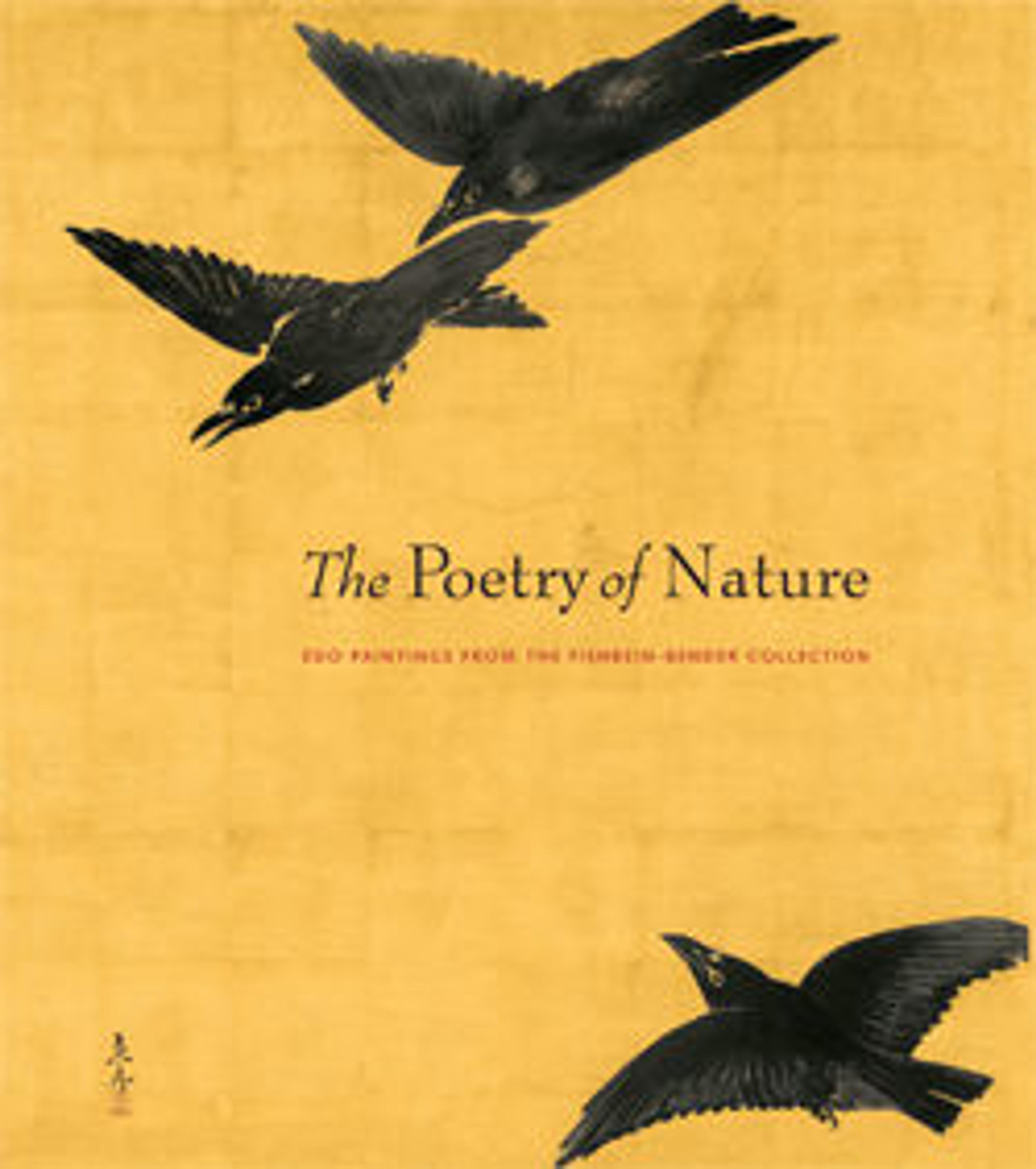Hollyhocks and Prince’s-Feather Flowers
Many paintings by Sakai Ōho, including this one, are based on or directly inspired by the work of Sakai Hōitsu, his adoptive father and teacher. Hōitsu no doubt had great aspirations for Ōho, but he died in his early thirties and left a comparatively small body of work. Hollyhocks (tachiaoi)—with their stately appearance, tall stems, and symmetrical arrays of leaves and blossoms—were a common subject of Rinpa artists from the seventeenth century onward, but prince’s-feather flowers (katade) rarely received such attention. The addition of a little butterfly, flat and decorative in its effect, is a reminder that the artist was capturing a poetic moment, a haiku-like snapshot of an imaginary garden.
This work was probably created as the right-hand scroll flanking the god of good fortune, Jurōjin, in a triptych.
This work was probably created as the right-hand scroll flanking the god of good fortune, Jurōjin, in a triptych.
Artwork Details
- 酒井鶯浦筆 立葵とカタデ図
- Title:Hollyhocks and Prince’s-Feather Flowers
- Artist:Sakai Ōho (Japanese, 1808–1841)
- Period:Edo period (1615–1868)
- Date:early 19th century
- Culture:Japan
- Medium:Hanging scroll; ink and color on silk
- Dimensions:Image: 40 1/2 in. × 14 in. (102.9 × 35.6 cm)
Overall with mounting: 76 1/8 × 19 7/16 in. (193.3 × 49.3 cm)
Overall with knobs: 76 1/8 × 21 5/16 in. (193.3 × 54.1 cm) - Classification:Paintings
- Credit Line:Mary Griggs Burke Collection, Gift of the Mary and Jackson Burke Foundation, 2015
- Object Number:2015.300.101
- Curatorial Department: Asian Art
More Artwork
Research Resources
The Met provides unparalleled resources for research and welcomes an international community of students and scholars. The Met's Open Access API is where creators and researchers can connect to the The Met collection. Open Access data and public domain images are available for unrestricted commercial and noncommercial use without permission or fee.
To request images under copyright and other restrictions, please use this Image Request form.
Feedback
We continue to research and examine historical and cultural context for objects in The Met collection. If you have comments or questions about this object record, please contact us using the form below. The Museum looks forward to receiving your comments.
